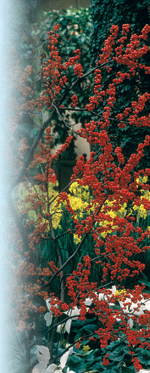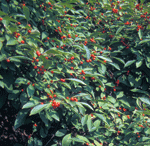Deciduous Hollies Provide Winter Interest
go.ncsu.edu/readext?234298
en Español / em Português
El inglés es el idioma de control de esta página. En la medida en que haya algún conflicto entre la traducción al inglés y la traducción, el inglés prevalece.
Al hacer clic en el enlace de traducción se activa un servicio de traducción gratuito para convertir la página al español. Al igual que con cualquier traducción por Internet, la conversión no es sensible al contexto y puede que no traduzca el texto en su significado original. NC State Extension no garantiza la exactitud del texto traducido. Por favor, tenga en cuenta que algunas aplicaciones y/o servicios pueden no funcionar como se espera cuando se traducen.
Português
Inglês é o idioma de controle desta página. Na medida que haja algum conflito entre o texto original em Inglês e a tradução, o Inglês prevalece.
Ao clicar no link de tradução, um serviço gratuito de tradução será ativado para converter a página para o Português. Como em qualquer tradução pela internet, a conversão não é sensivel ao contexto e pode não ocorrer a tradução para o significado orginal. O serviço de Extensão da Carolina do Norte (NC State Extension) não garante a exatidão do texto traduzido. Por favor, observe que algumas funções ou serviços podem não funcionar como esperado após a tradução.
English
English is the controlling language of this page. To the extent there is any conflict between the English text and the translation, English controls.
Clicking on the translation link activates a free translation service to convert the page to Spanish. As with any Internet translation, the conversion is not context-sensitive and may not translate the text to its original meaning. NC State Extension does not guarantee the accuracy of the translated text. Please note that some applications and/or services may not function as expected when translated.
Collapse ▲
‘Sparkleberry’
Robert E. Lyons ©
Deciduous hollies carry heavy crops of bright red, orange and occasionally yellow berries well into the winter. Their lack of leaves during the dormant season makes the fruit display all the more striking. The berries blaze with color, adding needed punch to the winter landscape.
The most common deciduous holly species are Ilex verticillata, winterberry, and I. decidua, possumhaw. These two common names are often used interchangeably, though they really should not be. Winterberry has a slightly larger, more rounded leaf than possumhaw, while possumhaw is a glossier shade of green. The most obvious difference between the two is their mature size. Possumhaw is the larger of the two, topping out at 30 feet. Winterberry usually reaches no more than 15 feet. Most cultivars will not attain that size in the landscape. Ilex verticillatais slightly hardier, ranging from zones 3 to 9. I. decidua is typically hardy only to zone 5.
Native to swampy areas, deciduous hollies are somewhat adaptable to various soils, as long as they are not allowed to get too dry. Both species prefer soils with an adequate amount of organic matter. Mulch your plants about 2- to 3- inches deep with organic mulch. Deciduous hollies prefer full sun, but can set some fruit in shade. Best fruit set is attained if there is a male plant in close proximity to the female to ensure adequate pollination. You may see some leaf spot or powdery mildew on some plants, but there are no serious pests for these plants.

‘Autumn Glow’
Robert E. Lyons ©
Used in the garden, deciduous hollies often fade into the background until fall. Once the leaves have fallen, the berries shine forth in all their glory, at least until the birds find them. Give these plants a bit of “elbow room.” They can fill up a smaller space quickly. In the landscape, they can be used as a large shrub or a small tree. Plants will often produce suckers from the base, but this is rarely a significant problem.
Popular cultivars include ‘Sparkleberry’, ‘Winter Red’, or ‘Byers Golden’. Suggested male pollinators are ‘Apollo and ‘Southern Gentleman’. American hollies, I. opaca, will provide pollen for the species and some cultivars.


